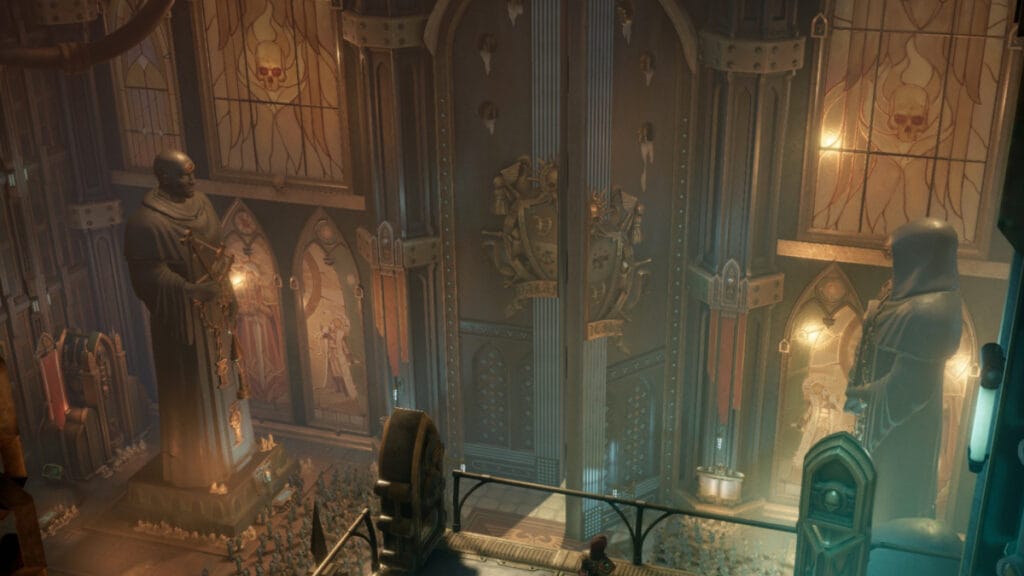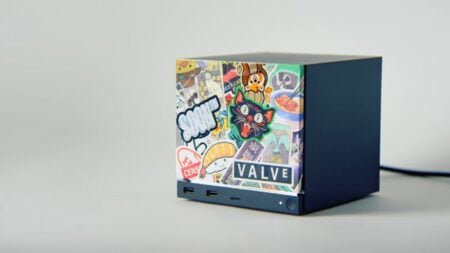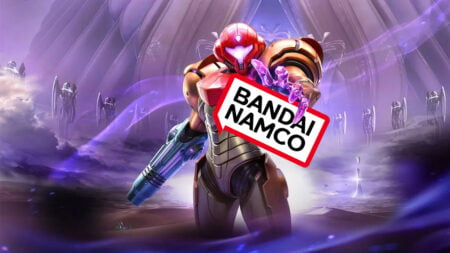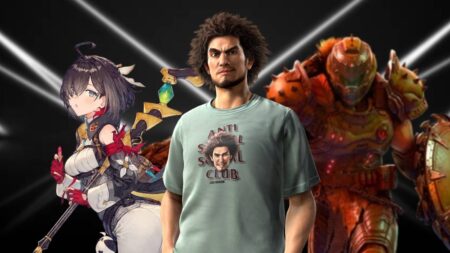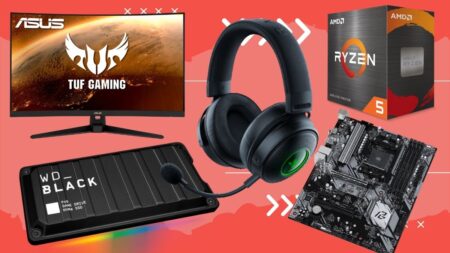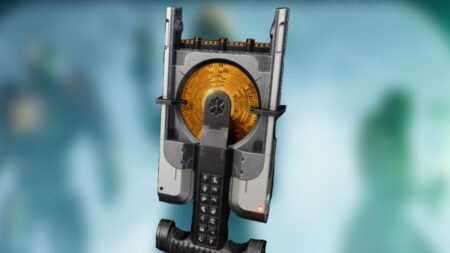Skip To...
When OwlCat Games announces a new game, we know what to expect: a story of the highest quality, fun combat, and difficult moral decisions. With Warhammer 40,000: Rogue Trader, this is no exception. After a year where another title led the genre, I didn’t imagine I would find another cRPG that would entertain me as much, and fortunately, Rogue Trader did. With deep world-building, memorable companions, and a streamlined combat system, your adventure is limited only by what you choose to do and by a few bugs you may encounter along the way.
Warhammer 40,000: Rogue Trader Review: Long May You Explore
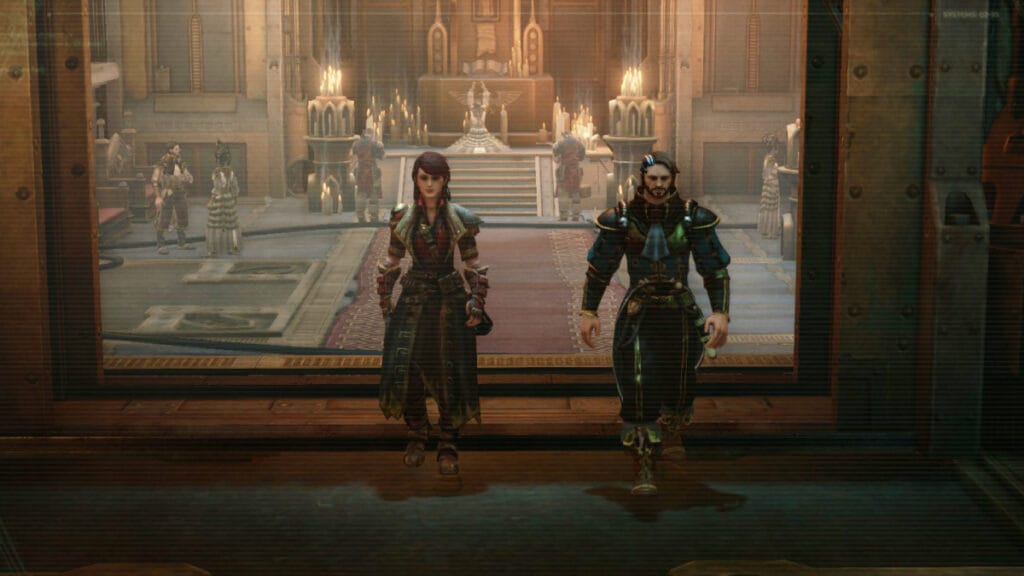
For those of you who are a little fearful about entering the world of Warhammer 40,000 with Rogue Trader, you shouldn’t be. OwlCat Games has done an outstanding job of making this game extremely beginner-friendly. In my case, where I am more familiar with Pathfinder than Warhammer, I never felt overwhelmed or bewildered. On the contrary, this game simplifies many things that turned me off in the studio’s previous titles while keeping things that I’m confident those hardcore fans will know how to get the most out of.
Story: Welcome to the von Valancius Dynasty
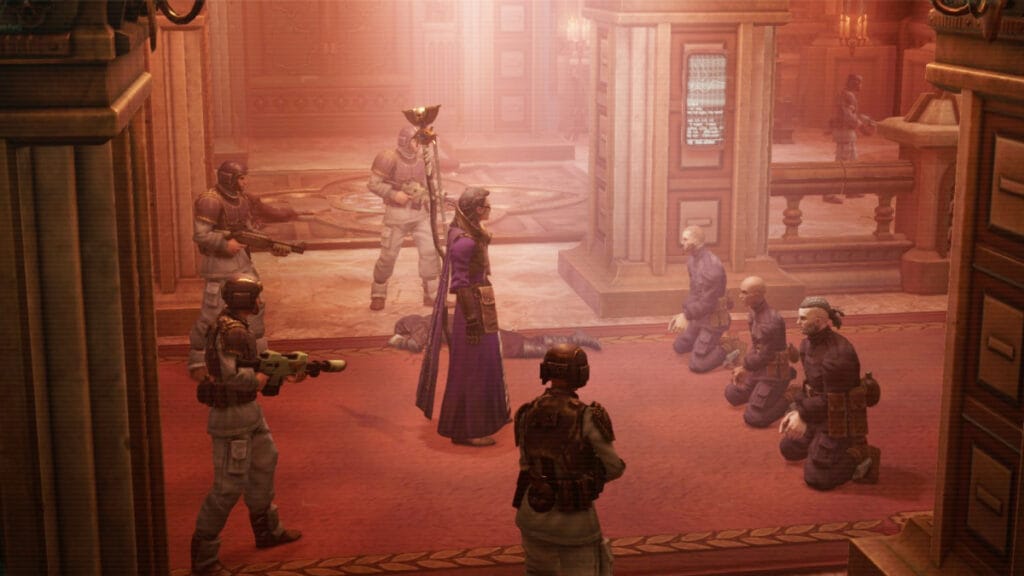
The story begins aboard the ship of Theodora von Valancius, the current Rogue Trader. Your character, which you can create in detail with an origin, class, and certain key life events, is a distant descendant of Theodora. In true OwlCat Games fashion, things take little time to get messy, and it’s all chaos and destruction within minutes. And, without spoilers, although many can imagine it, due to certain inevitable events, you become the new Rogue Trader of the von Valancius, which comes with a very appealing benefits plan: a new ship, all the money you can imagine, and the freedom to explore the space at your leisure.
Initially, the game’s story began to feel like Game of Thrones in space. You have the political intrigue, the backstabbing at all times, and the clear distinction between different factions and social classes. And while, to be frank, the nobility and political stuff bores me when there’s too much of it, it never happened here. The game allows you to be either the most stubborn and bullish noble in the galaxy or a Rogue Trader who values the lives of other people and alien species. All this makes you build your narrative, deciding where to take your newly inherited dynasty.
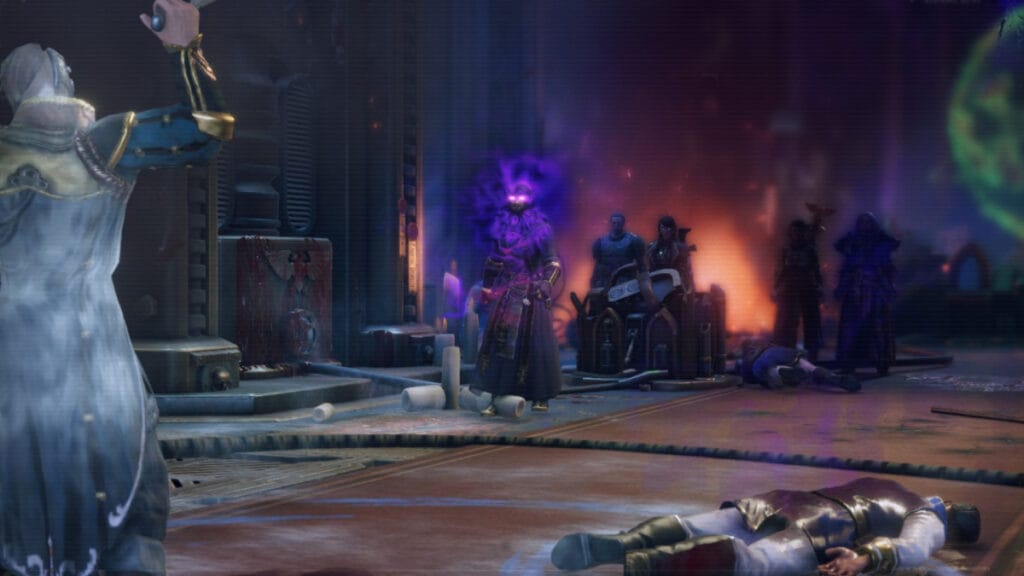
Speaking of humans and aliens, a cRPG would be nothing without your companions. Honestly, I didn’t find them as memorable as the ones in Wrath of the Righteous. I always felt compelled to replay my playthroughs in Pathfinder games to find different romances or classes. Here, I just feel like trying a new build. Now, that’s not to say they’re bad. They just felt flatter than usual. On the one hand, you have those who follow the Imperium fanatically and those who are heretics or of grey morality; they don’t stand out as I would’ve liked. However, I consider many of these companions’ missions very interesting, and many players will find them to their liking.
Furthermore, the pacing was the best part of the story and what kept me coming back. In many cRPGs, you have idle moments, but not here. The main story is one stunning moment after another. You arrive on a new planet: shootout. You get to another one: rebellion. There is no respite for the Rogue Trader, and I loved that because you decide how to handle each situation. My favorite mission was in Chapter 1, where I had to retake a monastery, and it allowed me to arrive as a Space Rambo or disguise myself and my retinue as heretics to sabotage the place.
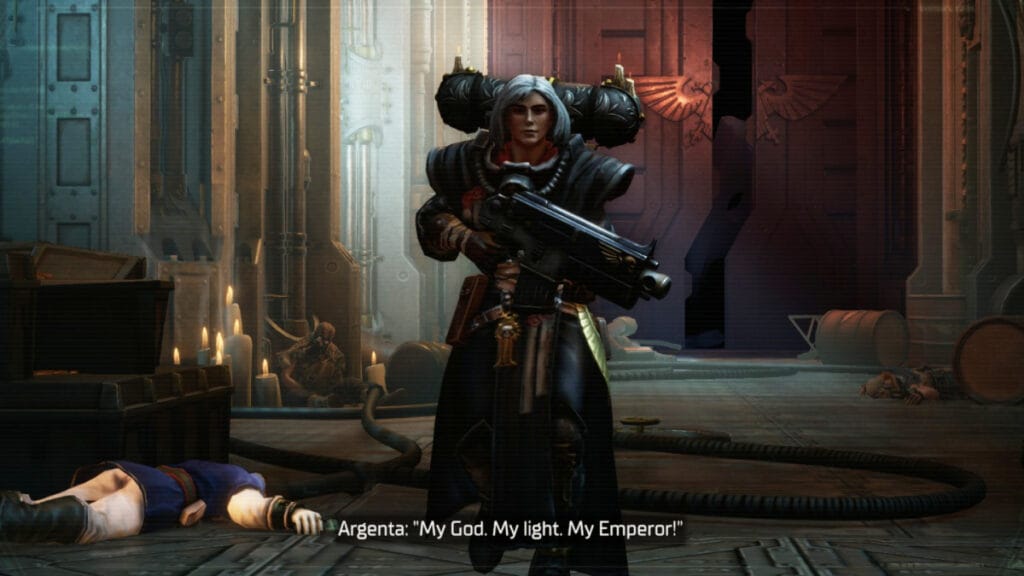
Finally, here’s a tip for those who play Warhammer 40,000: Rogue Trader: pay attention to the optional quests and the exploration system. Eventually, space opens up to you, and you can visit many systems and planets. Some of them have secret quests and locations where there are intriguing stories. On one of my trips, I found a Voidship full of insane Tech-Priests where the ship played tricks on my mind. I saw faces in the metal walls and heard noises in the corridors full of blood and shattered machinery. This mission alone scared me more than all the survival horror games of the year combined.
Gameplay: Gory Tactical Action
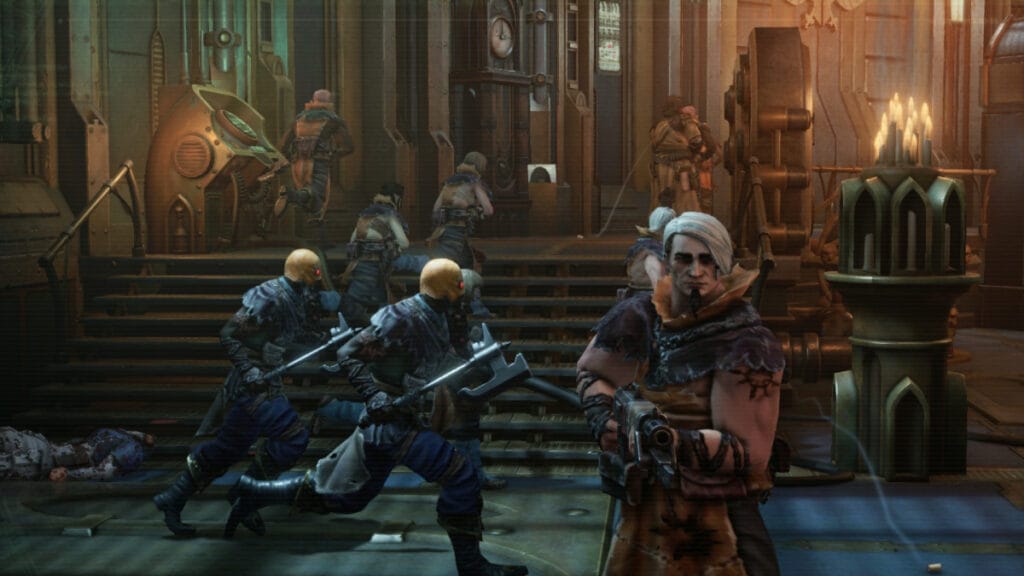
Originally, I imagined that Warhammer 40,000: Rogue Trader would be precisely like Kingmaker and Wrath of the Righteous but in space. I was surprised that the game feels more like XCOM combined with Mass Effect. All combat in the game is turn-based, and you have a turn indicator that depends on the initiative of your characters, similar to Baldur’s Gate 3. What changes is the combat itself, as it is handled on a grid and uses cover systems like XCOM or the more recent Persona 5 Tactica. This was highly creative for me as the studio went out of its comfort zone and nailed the new mechanics to make the gameplay something I enjoyed.
Also, for those who don’t know, the game adapts to the tabletop game systems. Obviously, this can be a bit scary for new players, but it never was. In fact, it was so simplified that I found it easier than Pathfinder. While you do have walls of text, the game allows you to modify your game to make it as easy or complex as you like. I played on the easiest mode to advance faster and still encountered several challenges. The bosses are very well designed with mechanics, and each fight throws hordes of enemies at you where moving your melee and ranged characters is key to winning.
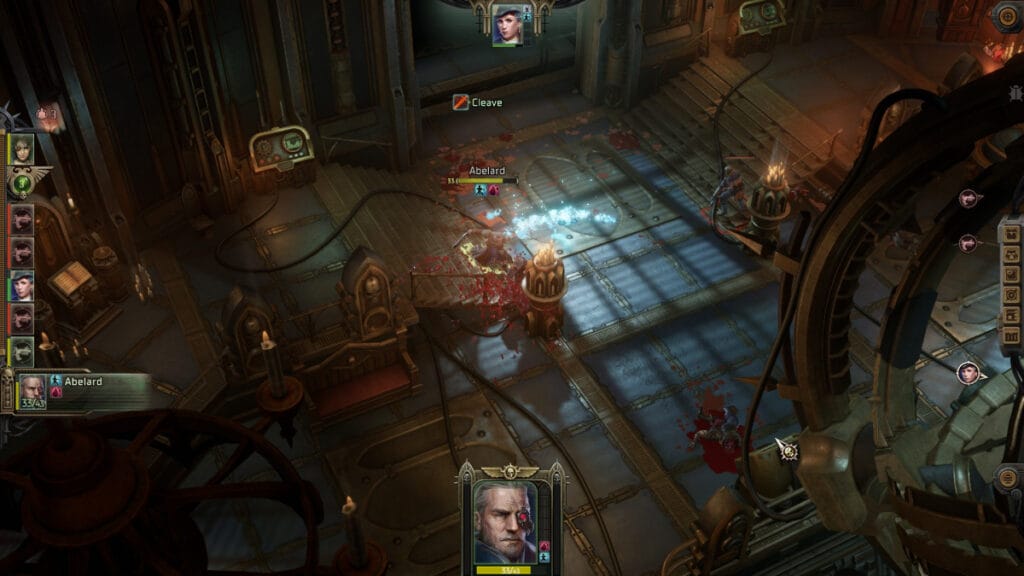
For example, the boss in the first act took me by surprise. After defeating minions without trouble and facing a few enemies with more health, the boss showed up with a huge gun that shot six times and beat my strongest characters in one turn. This was fun for me because it made me rethink my strategy and set up my team in a more tactical way. Besides this, the variety of enemies is very abundant. Each new fight introduces you to new types, from grenadiers to aliens with too much agility that can evade almost all of your attacks. Of course, they can all be defeated in the goriest ways you can think of and with the right build.
Fortunately, the game gives you the weapons to face these dangers. The class system or archetypes of the game is deep without being overwhelming, as in Pathfinder. You have three tiers: one when you start, another when you reach level 16, and the last at level 36. The first gives you the choice between Warrior, Officer, Operative, and Soldier. Although I had three operatives in my team, including my character, they were all different. Mine focused on attacking up close, the second on exploiting weak spots, and the last on attacking from afar accurately. There’s no shortage of builds, and I can’t wait to return to try a new one on a higher difficulty.
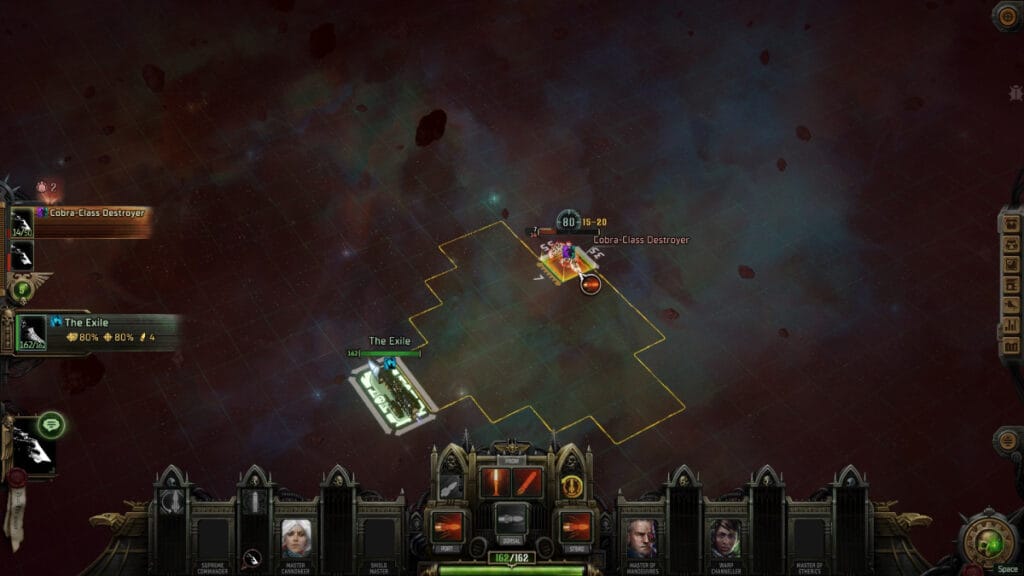
Additionally, and as I mentioned Mass Effect, it is essential to discuss why I felt it was similar. We all remember how we explored space aboard the Normandy, and here it is almost the same for your Voidship. You arrive in a new system and move your ship to scan new planets or, in the worst case, face enemies. The game has very realistic and fun space combat where you must maneuver your ship to use your full arsenal. While it wasn’t my favorite system, it was fun and added variety to what initially seemed like a mini-exploration game.
Beyond that, and something that many OwlCat Games fans previously disliked, we also have a type of management mission. In Kingmaker, you managed your kingdom; in Wrath, you cared for your army. Here, however, you colonize planets. When I heard about the system, I wasn’t thrilled. Managing my Kingdom in Kingmaker made me uninstall my game more than once until I got the courage to deal with virtual citizens. Here, it’s much simpler and more fun. You put extractors on planets, get resources, colonize some worlds, and assign projects. There are other systems that I can’t spoil, but it’s the easiest so far, and I never felt overwhelmed or bored doing it. Plus, the rewards are excellent.
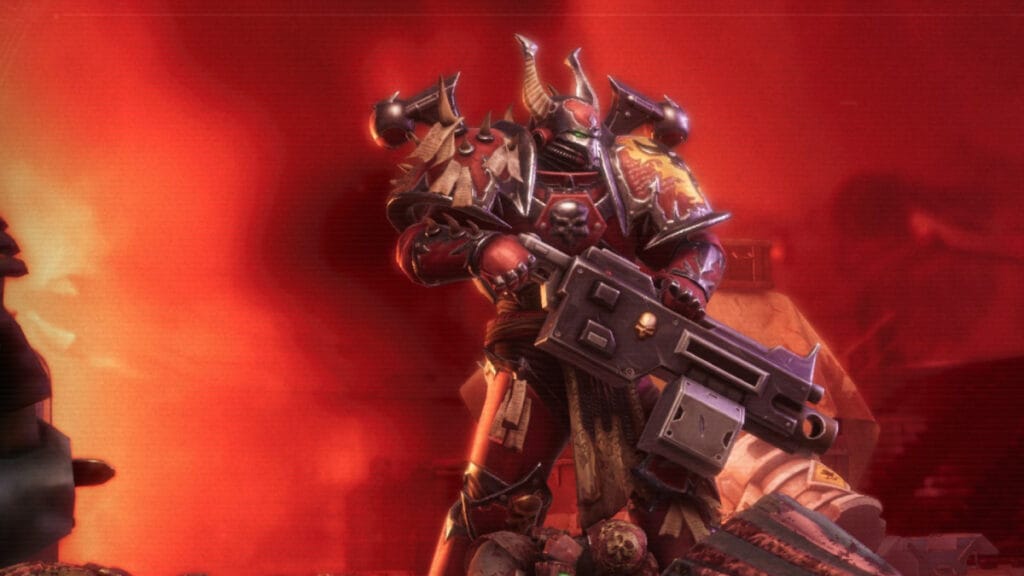
Lastly, many of the staples that I love from the studio are here, but other things that characterize them are also here: bugs and glitches. For a game that immersed me so much in its world, story, and characters, it’s sad to see bugs that break that immersion. I often had to restart the combat because the combat indicators disappeared. In other instances, I had to reload my game to a previous point because the tooltips were disappearing, and sometimes, I had to restart the whole game. Sure, I have confidence in the studio because they have shown that they can improve, but again, we need modders to have a good experience at the beginning.
Graphics and Audio: A Flawless Style
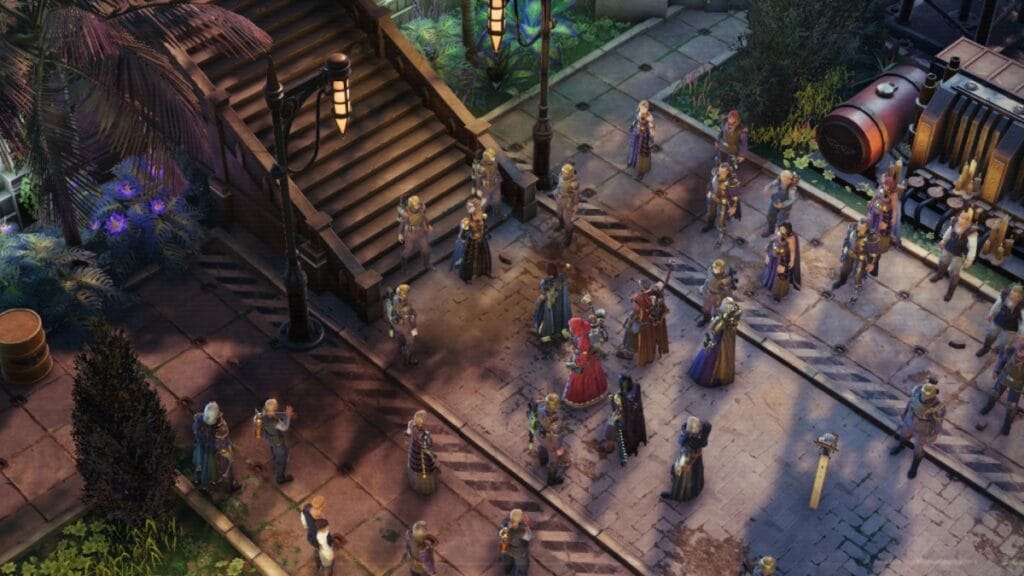
Anyone familiar with the Warhammer 40K series has probably heard the term Grimdark used to refer to the visual style. A future full of war, crime, destruction, and the opposite of what we can see in space franchises like Star Wars or Mass Effect. The developers have transferred that style perfectly to the game. The area that most demonstrates the sad reality of this universe is Footfall—a settlement full of poor people, pirates, and murderous rebels, where poverty and crime reign. From the moment I arrived and saw the contrast between the golden walls of the palace and the streets with houses and buildings built with metal sheets, I could see the characteristic style of this franchise.
Still, the graphical style takes a toll for a PC, where I played Warhammer 40,000: Rogue Trader. While I loved Footfall, my framerate dropped to 30 after being steady at 60. Fortunately, that was the only instance, and I can understand that. This port is chock full of NPCs that make even the most powerful computers overwork themselves. That said, everything ran smoothly once I got out of this area, and the art on any planet or location looks perfect. From the lush green jungles of Janus to the machinery and gear-filled corridors of the Voidships, everything is meticulously done.
Furthermore, the music is some of the best I’ve heard this year. From the opening chorus theme very similar to Halo to the heavy metal music tracks full of electric guitars and percussions that make a turn-based combat game feel even better than some action titles this year. It’s a symphony that rises and falls in pitch when necessary and mimics the story’s pacing as it never gets boring, never feels the same as before, and at all times made me feel like I was in battles of epic proportions. The people behind the music composition deserve recognition, and I hope they make it to The Game Awards next year.
Conclusion: A Game That Closes 2023 With a Bang
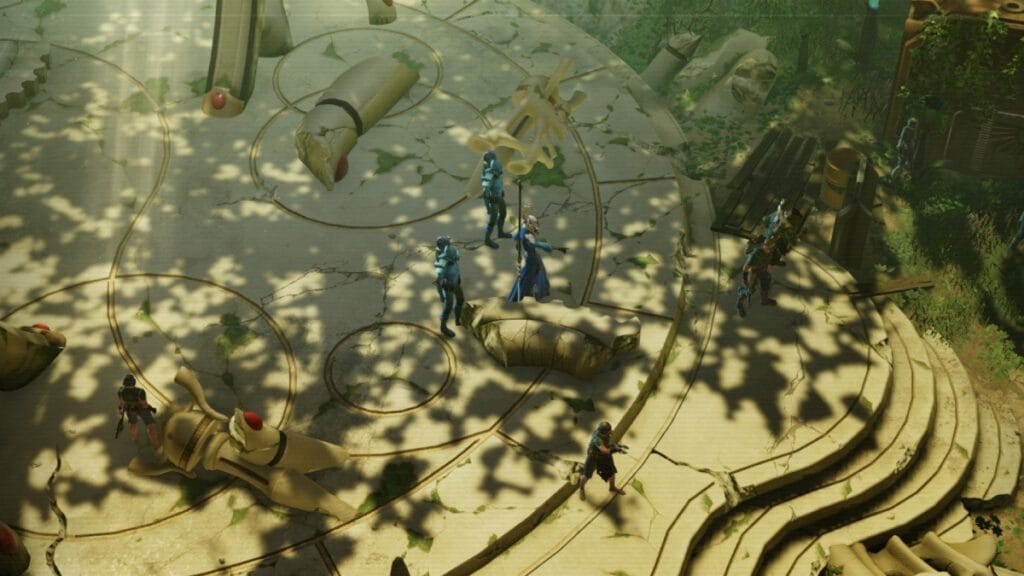
Undoubtedly, this has been one of the best years for video games, and I’m happy to say that Warhammer 40,000: Rogue Trader makes me leave with a lot of satisfaction. While a few bugs annoyed me, I never wanted to leave my keyboard. The story you create is fantastic, thanks to your character’s background and the decisions you make. Although not the best of the year, the companions are good in certain parts and fulfill their roles. And, like every game from the studio, it gives you the freedom to go back and see all the permutations of this game, which is full of intricate systems and difficult decisions.
Besides, if history has taught us anything, it is that these developers always keep improving their games and filling them with fun DLC that doesn’t let us escape from these universes. From rogue-like modes to new campaigns with different mechanics, they always give us something to do. I have high hopes to see what else is in store for us, but in the meantime, I’ll return to my ship to explore the dangers of the Warp and see what different versions of a Rogue Trader I can be.
Warhammer 40,000: Rogue Trader is available on PC (Reviewed).
Review copy given by Publisher.
Warhammer 40,000: Rogue Trader (PC Reviewed)
Another hit CRPG that'll hook you for hours.
Pros
- Compelling narrative.
- Engaging combat systems.
- High-stake choices for the player to pick.
Cons
- Not the most memorable companions.
- A few gameplay bugs.

